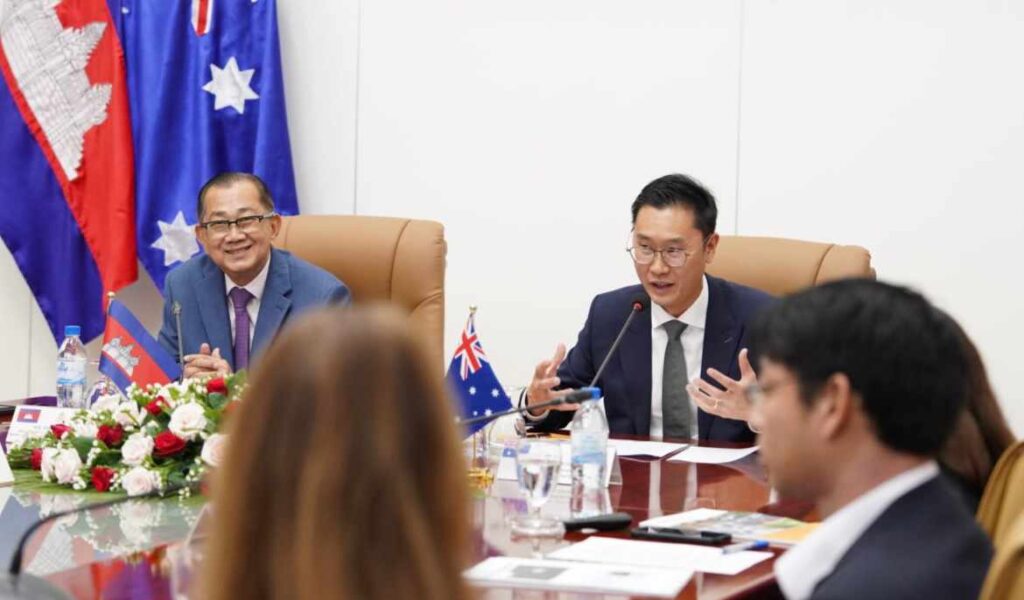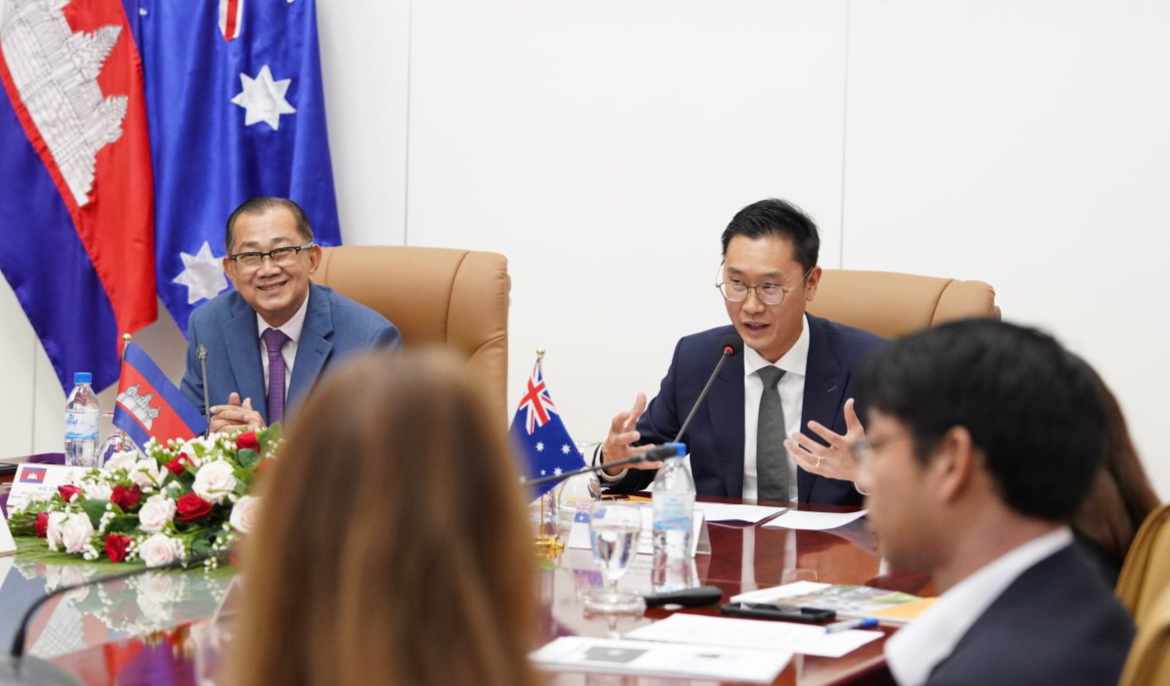Cambodia Investment Review
Australia has officially launched its Development Partnership Plan (DPP) 2025–2029 with Cambodia, laying out a renewed five-year strategy that aims to boost institutional strength, expand public service inclusivity, and support sustainable economic growth. The move marks the latest phase in a 70-year bilateral relationship and comes as Cambodia targets upper-middle-income status by 2030.
Strategic Objectives Aligned with National Vision
The DPP is built around three strategic objectives:
- Strengthening institutions and governance
- Improving access to inclusive public services
- Building a resilient, sustainable, and inclusive economy
These objectives are directly aligned with Cambodia’s Pentagonal Strategy – Phase I (2023–2028) and Australia’s broader foreign policy priorities for Southeast Asia. The plan emphasizes targeted cooperation in economic reform, climate resilience, and human development.
According to the plan, Australia will scale up investments in climate adaptation and mitigation, support economic diversification, and help Cambodia build shock-resilient public services and governance systems. In doing so, it intends to leverage both bilateral and multilateral development channels, while supporting Cambodia’s transition from Least Developed Country (LDC) status.
Backing Cambodia’s Transition to Upper-Middle Income
With an average GDP growth rate of 7% since the 1990s, Cambodia has made significant strides in reducing poverty and improving livelihoods. However, the report acknowledges that structural challenges—including limited economic diversification, high private debt, and weak infrastructure—remain key obstacles.
Read More: South Australia Eyes Expanded Economic Ties with Cambodia Across Key Sectors
Australia plans to assist Cambodia in navigating its LDC graduation by strengthening trade competitiveness, supporting regulatory reforms, and helping mitigate the economic risks of losing preferential trade access in markets like the EU. Initiatives to improve productivity in key sectors like manufacturing, agro-processing, and green energy are also prioritized under the plan.
The flagship Cambodia Australia Partnership for Resilient Economic Development (CAPRED) will continue to serve as the cornerstone of economic collaboration, with ongoing support for SMEs, trade promotion, and sustainable infrastructure development.

Social Protection, Healthcare, and Education in Focus
The DPP outlines Australia’s continued support in Cambodia’s push toward Universal Health Coverage by 2035. The plan commits to scaling public health services, expanding access to social protection programs, and addressing malnutrition and rising rates of non-communicable diseases (NCDs).
Australia will also invest in public sector capacity building, with particular emphasis on decentralization, accountability, and inclusive service delivery. This includes support for improving public education quality, particularly in rural areas, and continued scholarships and leadership exchanges through the Australia Awards program.
Special attention is given to Gender Equality, Disability, and Social Inclusion (GEDSI), with targeted measures to enhance access for women, Indigenous communities, persons with disabilities, and LGBTQIA+ groups.
Climate and Governance: Key Levers for Long-Term Stability
Australia will significantly increase its investment in Cambodia’s climate resilience, aiming to address the country’s high exposure to floods, heatwaves, and changing rainfall patterns. Priorities include climate-smart agriculture, renewable energy transition, and the mainstreaming of nature-based solutions in infrastructure planning.
On governance, the DPP focuses on building policy-making capacity, combating transnational crime, and strengthening civil society engagement. Australian agencies—including the Australian Federal Police and the Department of Home Affairs—will continue to work with Cambodian counterparts to address cross-border challenges such as cybercrime, trafficking, and money laundering.

Monitoring Progress and Looking Ahead
Australia’s Department of Foreign Affairs and Trade (DFAT) will lead monitoring efforts through a structured Performance Assessment Framework, with a mid-cycle review planned in 2027. Progress will be measured against indicators ranging from institutional reform and climate resilience to improved access to services and inclusion metrics.
The DPP aims to be adaptive, with room to consolidate or phase out programs as needed based on evidence and evolving Cambodian priorities. Ongoing stakeholder consultations with Cambodian ministries, civil society, and the private sector will guide implementation and alignment.
Bottom Line
Australia’s Development Partnership Plan 2025–2029 reflects a maturing bilateral relationship rooted in mutual respect and strategic alignment. By anchoring support in local realities and national strategies, the plan aims to help Cambodia build a stronger, fairer, and greener future—while reinforcing Australia’s role as a long-term regional development partner.



